Articles
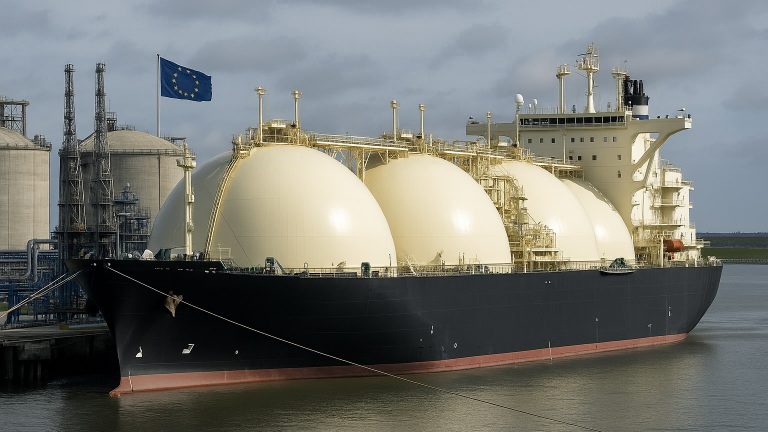
LNG in EU 2025: Strategic Backbone or Climate Risk?
LNG in EU policy has shifted from a fix to a structural backbone. In just two years, LNG in EU terminals has transformed supply routes, diversified partners, and cut dependency on Russian flows—yet this rapid pivot brings a deeper question. Can a fossil-based system built in urgency now be repurposed to align with Europe’s binding 2030 climate targets? While leaders celebrate resilience, emissions watchdogs warn of a quiet regression. This article unpacks how LNG’s growing role tests the limits of climate credibility across infrastructure design, lifecycle emissions, financing logic, and governance blind spots.

Subsidized Sustainable Aviation Fuel: Europe’s €6/L Market Boost Explained
Sustainable Aviation Fuel (SAF) provides considerable carbon reductions. The lifecycle emissions are reduced by up to 80% compared to traditional fossil jet fuel. However, it is too expensive for wide-scale use. The solution to this issue is that the EU is subsidizing SAF by around €6 per liter for e-fuels & €0.5 per liter for biofuels. With airlines, investors, and refiners adjusting their policies, this is a significant market realignment. The article examines the design of the subsidized sustainable aviation fuel, its real impact, and its wider implications for climate policy and decarbonization of aviation.

Carbon Removal Certification Framework for Businesses
Carbon removal technologies are credibility-challenged due to variations in verification standards across global markets. Organisations do not have appropriate tools for identifying credible approaches and avoiding greenwashing danger. Lack of convergent certification systems makes it challenging for organisations that intend to seriously invest in carbon removal procedures. Clarity on application methods and quality evaluation, as well as verification processes, is an essential aspect to facilitate making informed decisions. Strong deployment of the carbon removal certification framework instills confidence among stakeholders, and this allows growth in climate action at scale. This article explores the standards for verification, examines various program designs, and discusses how to include businesses in carbon removal certification systems.

Green Artificial Intelligence: Balancing Innovation with Energy Efficiency
The digital revolution driven by AI is the most promising tech frontier for humanity. Nevertheless, this staggering computation comes at an incredible cost of energy. This cannot be ignored in our eco-conscious era. Behind every AI breakthrough is a chain of power-guzzling data centers. It underscores the environmental paradox of digital solutions. Moreover, the increasing awareness of the energy footprint of AI has led researchers, business leaders, and policymakers to rethink how these systems could be developed more responsibly. Green artificial intelligence is introduced as a paradigm to address this problem. It fundamentally transforms how we design, train, and deploy artificial intelligence systems. This article talks about the environmental effects of AI development, creative solutions towards computing that’s energy-efficient, and best practices that will define the future of responsible AI.
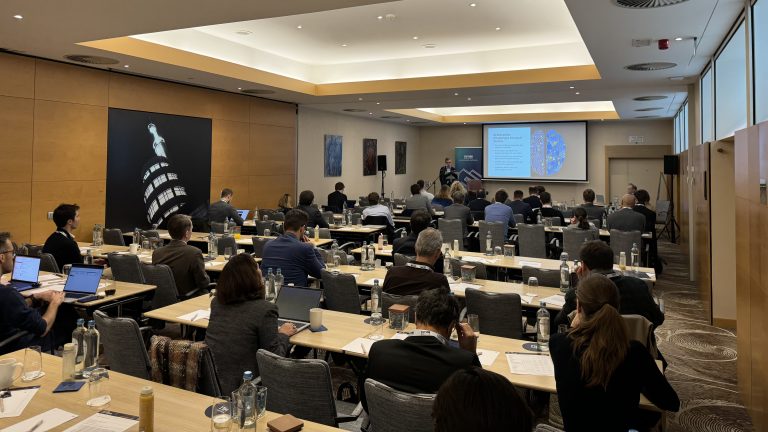
AI Legal Summit 2025: A Detailed Recap
AI continues to transform various industries and the legal profession is no exception. The AI Legal Summit 2025 engaged the present need for legal specialists to incorporate innovation while handling complex regulatory areas. AI continually demonstrates a growing impact on legal services that involve research practices as well as the management of contracts and compliance functions. So, legal firms and corporate legal departments must stay ahead of the curve. The summit provided just that with legal experts, technologists, and policymakers exploring AI’s potential, challenges, and future applications. This article goes through an in-depth recap of the summit looking at its sessions and sponsors.

How Does Legal AI Simplify ESG Compliance and Reporting?
Sustainability and corporate social responsibility are crucial elements today for an organization. This has led to ESG compliance coming into the limelight of business agendas. Nevertheless, keeping up with changing regulations and providing accurate disclosure/ transparency can be a challenge. Businesses need efficient ways of managing ESG requirements without overloading legal and compliance teams. Legal AI solutions are emerging as a game-changer by offering new channels for streamlining complex processes. With companies making the shift to evolving expectations, technology uptake is made compulsory for assuring compliance, reducing risk, and optimizing operating effectiveness. This article explores how legal AI can make ESG compliance and reporting easier.

How to Future-Proof Your Legal Profession in the AI Era?
Adaptability has always been necessary for legal practitioners, but the quick changes in the legal industry are presenting new challenges. Since they must deal with evolving industry norms, technological advancements, and shifting client decision considerations, legal experts cannot depend exclusively on conventional skills. Success in the increasingly dynamic legal profession depends on both proactive skill development and accurate change prediction. To be effective, professionals must continuously improve their professional skills in areas including strategic thinking, technology know-how like AI in legal industry, and managing regulatory compliance. The article gives necessary strategies that will ensure resistance against future changes in legal professional fields. Such training helps experts weather new professional obstacles which are common in the continuously altered legal environment.

Event Partners: AI Legal Summit 2025
The AI Legal Summit 2025 on 27 & 28 February in Brussels, Belgium, promises to be revolutionary. The event helps legal professionals navigate the integration of law and AI. With the continuing evolution of AI in the legal world, the summit offers a unique platform in which industry professionals, legal experts, and visionaries come together to discuss new opportunities, best practices, and technological advances. The event is crafted in a way to promote collaboration and learning. This is in areas like AI applications for contract management, legal cases, & compliance with regulations. A key feature of the summit remains its impressive lineup of sponsors who enable the summit. This article examines the partners of the AI Legal Summit 2025, detailing their contributions/roles in shaping this important gathering.

Cybersecurity Risks in Legal AI Applications
AI is changing the way business operates worldwide, and that includes the legal profession. Legal experts adopt AI for contract review, research, and compliance activities. Despite the revolutionary advantages, the use of AI brings with it intricate cybersecurity risks. With large volumes of sensitive information, legal AI systems are attractive targets for cyberattacks, breaches, and manipulations. Solving these issues demands a thorough knowledge of possible threats, efficient mitigation measures, and compliance with ethical practices. This article discusses major cybersecurity threats in legal AI applications and leads the way on how to secure these technologies without redundancy.
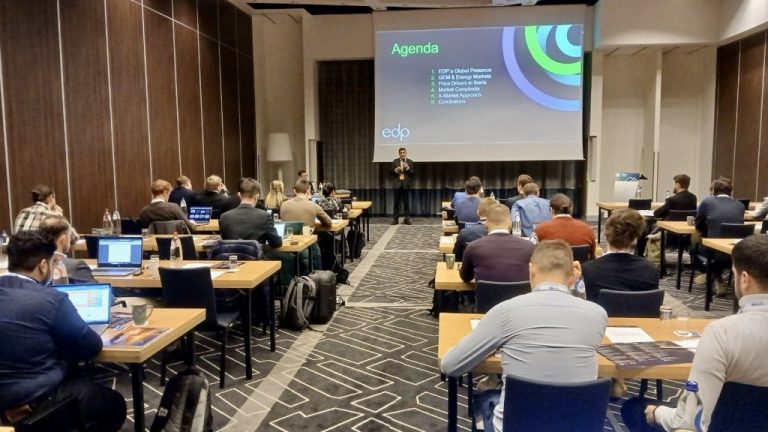
6th Power Price Forecasting Summit: Detailed Recap
The 6th Power Price Forecasting Summit in Amsterdam, Netherlands on January 15 – 16, 2025 brought together industry experts and decision-makers. They addressed the issues related to power price forecasting. In addition, given the pace of change in the energy industry caused by the emergence of renewable energy generation, geopolitical instabilities, and changing regulatory environments, the summit provided the necessary forum for the sharing of knowledge and collaboration. This article gives a comprehensive account of the sessions and sponsors that contributed to this event becoming a pillar in the development of power price forecasting strategies.

AI in Patent Analysis and Management
The convergence of artificial intelligence (AI) and intellectual property (IP) is changing how businesses protect and profit from their inventions. The rise in global innovation has also put the concern of dealing with the growing complexity and quantity of patents into light. Conventional approaches, based on manual work, are failing to meet the needs of the demands, which frequently results in inefficiency and lost opportunities. AI provides an exciting new perspective on patent analysis and management, revolutionizing the playing field via automation, deep analytics, and prediction. This article discusses how AI transforms patent search, portfolio management, and trend analysis and presents actionable information on how to proactively compete in today’s competitive landscape.

KYOS Joins As Presenting Partner For 6th Power Price Forecasting Summit
The 6th Power Price Forecasting Summit, on January 15-16, 2025, in Amsterdam, is one of the most eagerly awaited events for those working in the energy markets and who face the challenges it offers. The summit occurs at a moment when global energy systems are transitioning at an accelerated pace fueled by renewable energy deployment, policy changes, and trading environment fluctuations. Accurate power price prediction has always been important but is now more critical than ever. This is because it directly affects energy trading activities, investment decisions, and operation planning. This year, the event gains further significance with KYOS’s introduction as the presenting partner. This article introduces KYOS’s contribution/role and explains why this event should be a top priority for energy professionals.

Intraday Auctions: How Is It Reshaping European Energy Trading?
The landscape of European energy is undergoing a dramatic transformation with a growing emphasis on striking a balance between the integration of renewable energy generation and aftermarket efficiency. This change, however, is accompanied by many barriers. It covers the need for energy supply variations, real-time demand, and optimized trading processes. Intraday auctions (IDAs) have come up as a major innovation to deal with the complexities. IDAs, unlike traditional mechanisms, allow participants to fine-tune their energy positions closer to delivery, reflecting changes in real-time to the grid. If seen beyond a traditional tool, IDAs depict a milestone in the modern energy market design. They enhance adaptability, promote cooperation cross-border, and give a structured platform for addressing the dynamic nature of energy flows in Europe. This article goes through the technological/ regulatory enablers of intraday auctions and also explores the opportunities and challenges shaping European energy trading.

LLMs & NLP: Reshaping Legal Knowledge Management
The legal industry stands at a crossroads with the advent of technology revolutionizing conventional knowledge management practices Among the most significant developments, Large Language Models (LLMs) & Natural Language Processing (NLP) are revolutionizing the way legal teams can access, organize, and apply information. These tools enable the automation of tasks, identification of actionable insights, and facilitation of processes that previously seemed unimaginable for making decisions. This article discusses how LLMs & NLP are transforming legal knowledge management. We will look at their role in transforming data organization, driving informed decision-making, and challenges associated with adoption. With these innovations in mind, legal professionals can unlock new efficiencies and prepare for a tech-driven future.

Peak Shaving: Impact on Price Formation
Electricity markets are undergoing profound transformations in response to the rise of renewables and changing consumption. A central challenge for grid operators is managing peak demand—the periods when electricity consumption spikes beyond average levels. This has an impact on infrastructure, creates an increased operational cost, and leads to high price fluctuations. Peak shaving, as a demand-side management technique, mitigates the aforementioned issues. It has also become a pillar of modern grid operations influencing everything from energy price-setting mechanisms to infrastructure design. This article discusses the process of peak shaving, its impact on the design of wholesale electricity prices, and the innovations and challenges it holds.

The Future of Legal Research with AI Tools
The legal profession has traditionally relied on painstaking research and human knowledge to understand and move within a sea of regulations and case law. Nevertheless, with technological development, the mode of practicing by the legal professional is changing at an alarming rate. AI is today a powerful tool that streamlines repetitive work, improves decisions, and reveals previously inaccessible insights. It not only reflects efficiency but also a chance to redefine the way legal services are delivered. From parsing vast legal databases in seconds to improving the accuracy of complex analysis, AI is fundamentally changing the landscape of legal research. This article considers how AI is transforming legal research in law firms, the challenges AI presents, and the innovation potential.

AI In Legal Departments: Transformative Impact And Prospects
The legal industry sits at a technological crossroads where artificial intelligence is very rapidly changing the traditional forms of practice. With digital technology, the integration of intelligent systems into the core operations is presenting legal departments with unprecedented challenges and opportunities. This juncture of legal expertise with advanced computational capabilities is creating a new paradigm of delivering legal services. This article will focus on three important dimensions: technological transformation, operational intelligence, and strategic innovation – which constitute the revolutionary impact of AI in legal departments.

The Role of Demand Response in Price Stabilization
The energy sector worldwide is undergoing a great transformation. It is fostered by the growing penetration of renewable energy, innovative technologies, and changing consumption habits. These developments present opportunities as well as challenges, especially in maintaining reasonably stable electric prices. Supply and demand fluctuations along with the variability in renewable power sources cause market instability. The solutions to these challenges are innovative approaches that need to reconcile grid reliability and economic efficiency. Demand response (DR) is central in this setting as it aligns energy consumption with grid conditions. This article explores the multifaceted mechanisms of demand response, points out technologies boosting its efficiency, and focuses on policies & market structure that will enable it as part of the modern energy system.
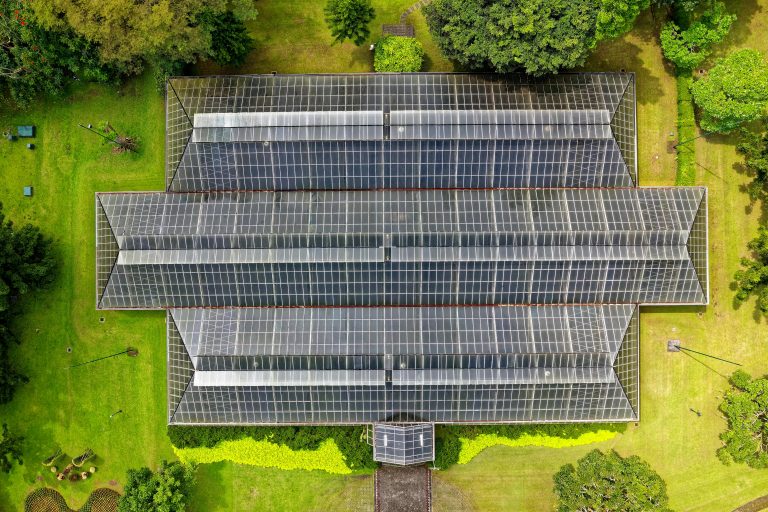
Prosumer Impact on Local Power Markets
The energy revolution is no longer a distant vision but an unfolding reality. It is driven by individual consumers who are transforming from being mere passive electricity users into active market participants. Furthermore, the traditional paradigms of energy are no longer valid, so prosumers are emerging as the builders of future decentralized, sustainable, and democratized energy scenarios. Moreover, their ability to generate, store, and trade energy is reshaping the rules of local power markets. This, in turn, is challenging the established utilities and opening several possibilities for innovation. The article elaborates on the consumer impact on energy markets. These include innovation in technology, economic dynamics, and regulatory frameworks. These completely reshape how we produce, consume, and engage with resources of energy.
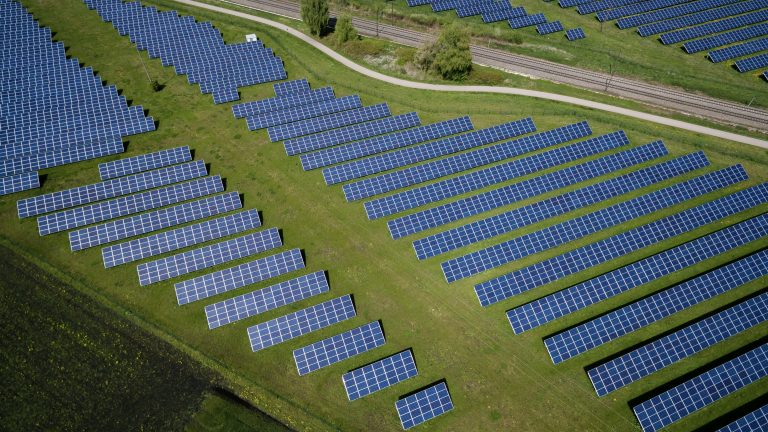
Cloud Computing in Power Price Forecasting
The energy sector stands at a critical technological intersection. This is where data is becoming increasingly valuable than traditional resources. Furthermore, global markets are volatile with renewable energy, geopolitical tensions, and technological disruptions creating unprecedented complexity when it comes to power pricing. Moreover, the traditional means of forecasting are fast being rendered obsolete. It is incapable of capturing the fine web of factors that impact energy markets. This is where emerging technologies emerge with promises to shape and mold raw data into actionable intelligence. Cloud computing is representative of that transformative potential. It takes a revolutionary approach to understanding the dynamics of a market. So, this article discusses how technologies of cloud computing are revolutionizing power price forecasting. It also explores their ability to provide unseen computational insights, sophisticated data integration, and deliver strategic intelligence.

Industrial Load Forecasting: Advanced Techniques For Accuracy
The power grids worldwide face unprecedented challenges in predicting and managing industrial energy consumption. The stakes are also higher than ever as grid stability and efficiency in operations hang in the balance. So, industrial load forecasting emerges as an essential tool for the energy manager, traders, and grid operators who have to maneuver the intricacies of the modern power markets. Moreover, the traditional approaches of simple trend analysis and basic statistical modeling are no longer sufficient today when real-time decisions can translate into the difference between optimum performance and costly inefficiencies. This article will outline three key areas of industrial load forecasting. This includes data integration and preprocessing techniques, advanced modeling approaches, and real-time adaptation strategies.

How Can Conference Participation Transform Your Professional Journey?
Industry conferences stand as a powerful catalyst for organizational success in today’s fast-paced professional world. Furthermore, these dynamic gatherings bring innovation, collaboration, and professional transformation for professionals of different profiles. Moreover, the synergy that is created in conference participation when professionals from diverse backgrounds and expertise come together creates a powerful ecosystem of opportunity creation to stay ahead of competitors. This article explores some crucial dimensions of conference participation
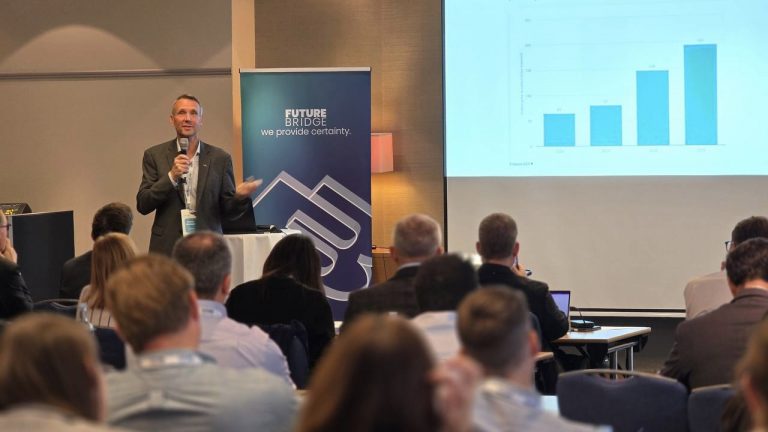
Future Bridge Conferences: Role In Industry And Technological Development
Industries around the world are facing complex demands from striving for net-zero emissions to embracing efficient digital transformation. So, the need for collaborative platforms that push innovation has never been greater. Future Bridge has established itself as a cornerstone when it comes to this landscape. It creates specialized summits that bridge the gap between theoretical innovation and practical implementation. Moreover, these conferences are spread out from Berlin to Phoenix to many more locations to tackle the local challenges in sustainable energy, data center efficiency, industrial security, and many more. Future Bridge has also curated events (scheduled for 2025) that will ensure that you stay ahead of the competitors. This article explores how these conferences are shaping industry and technological development.

What Key Topics & Industries Are Being Discussed At The Leading Conferences in 2025?
With the rapid evolution of industries and new challenges coming up in 2025, many leading conferences in 2025 are being organized to address critical topics. It ranges from sustainability and net-zero initiatives to technological advancement and industrial security. Furthermore, such summits prove to be glorious platforms to enhance knowledge sharing, networking, and innovative solutions across various sectors. In this article, we will take a look at the leading conferences in 2025, including the topics that they will cover and the industries that shouldn’t miss these events.
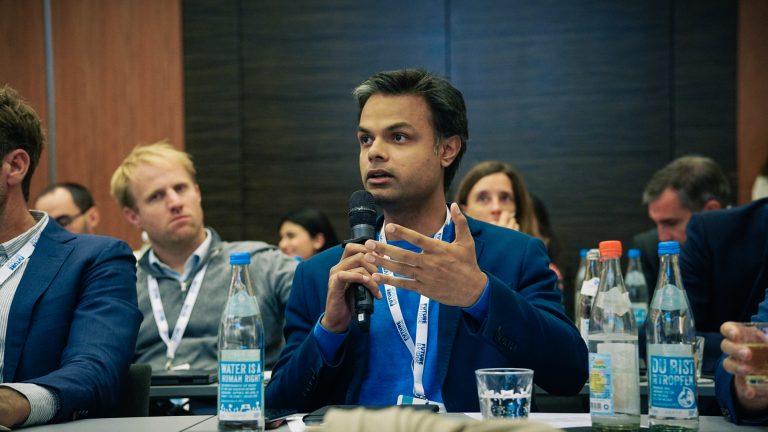
Leading Conferences of 2025: A Must-Attend Guide for Industry Pioneers
The world is gearing up for 2025 with some landmark improvements on the technological and innovative front. The year would be lined up to host some of the most monumental or must-attend events 2025 that would carry forward and exhibit milestones in various fields from next-generation mining solutions, and AI-driven legal tools, to the development of private networks, and the ramping up of gigafactory constructions. Such events will bring the crème de la crème of the industries, executives, and inventors converge to discuss their problems and chart a course forward. These leading conferences present precious opportunities to connect, learn, and set the pace for the evolution of an industry for organizations dedicated to staying competitive and innovative.

Carbon Pricing Mechanisms: Pros, Cons, and Global Implementation
Climate change is escalating and governments worldwide are looking for innovative solutions to minimize greenhouse gases. Carbon pricing mechanisms have come out to be an effective solution in this fight. Furthermore, it gives an approach that is market-driven to reduce the carbon footprint. Moreover, these mechanisms focus on reshaping the behavior of consumers and business practices. This is by assigning a cost to the carbon emissions. However, carbon pricing is not a straightforward approach. It reflects various models and approaches being tested globally. As a result, understanding the intricacies becomes crucial for businesses, policymakers, and even citizens. In this article, we will go through the world of carbon pricing. We will look at the types, advantages, and disadvantages of carbon pricing mechanisms, and more.

Innovative Carbon Reduction Solutions for a Greener Future
Do you know that more than three billion people reside in areas vulnerable to climate change? This ahead of us is the most serious and dreadful indicator of global risk. So, to lower carbon emissions, innovative carbon reduction solutions are essential. To solve this problem, scientists, engineers, and legislators are putting out endless effort. They are creating innovative tactics and technology. Moreover, these range from nature-based approaches to cutting-edge innovations. This article explores promising carbon reduction solutions. We’ll examine how these ideas could shape a greener future. Additionally, understanding these solutions is key to appreciating our progress. It also highlights the potential for positive change in our fight against climate change.

Top Conferences to Attend in 2025: A Guide for Innovators and Professionals
As we are approaching 2025, the professional landscape is showing evolution at an unprecedented rate. Furthermore, the era of rapid technological advancement and shifting paradigms has made staying ahead of the curve a necessity. Attending the right or top conferences can be the key to do so for innovators, industry leaders, and professionals. It is one of the best ways to unlock new opportunities, gain critical insights, and forge valuable connections. A series of summits that are expected to redefine standards in their respective disciplines are scheduled for next year. A wide range of sessions, case studies, panel discussions, and more are included in these summits. We will explore these events in this article to give you a thorough rundown of what to anticipate.
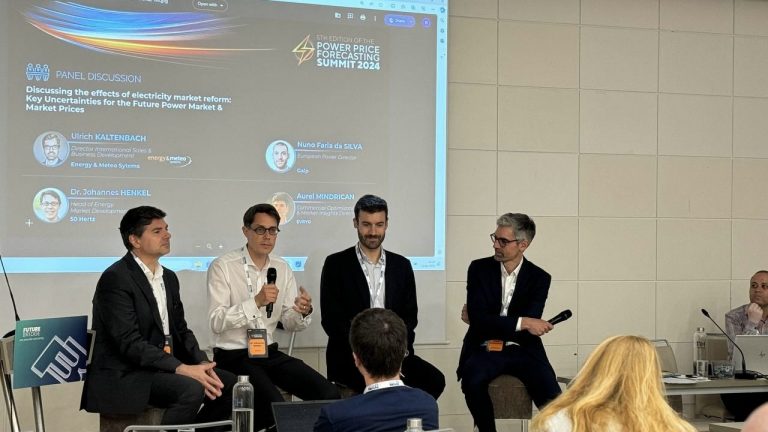
Recap And Insights From The 5th Power Price Forecasting Summit
The 5th Power Price Forecasting Summit was held in Barcelona, Spain, on June 11-12, 2024. It brought together thought leaders, industry experts, and professionals from the power generation, energy trading, and utility sectors. Furthermore, this two-day event provided an invaluable platform. It addressed the dynamics shaping the future of the wholesale energy market. Moreover, it delved into the intricacies of power price forecasting and explored cutting-edge technologies and methodologies. In this article, we get deeper into what the sessions were about, the value addition that summits like these provide and much more.

Portfolio Optimization Strategies Using Price & Volume Forecasts
Optimizing portfolios is crucial in energy trading, impacting profitability and risk management. Accurate price and volume forecasts have become indispensable tools, enabling traders to make informed, data-driven decisions. Leveraging these forecasts allows traders to maximize potential returns while mitigating exposure to risks. This article delves into various optimization strategies and examines how to effectively utilize price and volume forecasts. By employing these techniques, traders can gain a competitive edge, enhancing their ability to navigate the dynamic energy markets and capitalize on lucrative opportunities while maintaining a robust risk profile.

How Does Sector Coupling Affect Power Price Forecasting Models?
The energy sector is seeing a rapid transition in today’s time. The reason for this stands to be the pressing need for clean and efficient energy systems. Sector coupling stands to be at the forefront of this transition. It combines the energy sectors of power, cooling & transportation, and heating. Furthermore, this interdependence has significant ramifications for power price forecasting models used to anticipate power prices who have hitherto only taken the electrical industry into account. Reliable electricity price projections now depend critically on accurately representing the interdependencies and interactions between these connected sectors. The article discusses the evolution of sector coupling and looks at the potential it offers. It also looks at the changes that must be made to maintain effective forecasting in this changing environment.

Energy Storage: Reshaping Short-Term Power Price Forecasting
The rapid growth of energy storage systems is changing the landscape of the power market. It is introducing new dynamics that should find space in the short-term power price forecasting models. Furthermore, renewable energy is finding unmatched adoption. So, the need for energy storage to balance the intermittent supply and demand has also become crucial. This shift has profound implications for market participants. It requires them to adapt their forecasting strategies. This is to incorporate the unique characteristics and capabilities of energy storage technologies. So, market players can gain a competitive edge in navigating the evolving market dynamics and optimize their short-term operations. This is by understanding and accurately modeling energy storage systems. In this article, we help do that by covering energy storage’s impact on market dynamics and short-term power price forecasting.
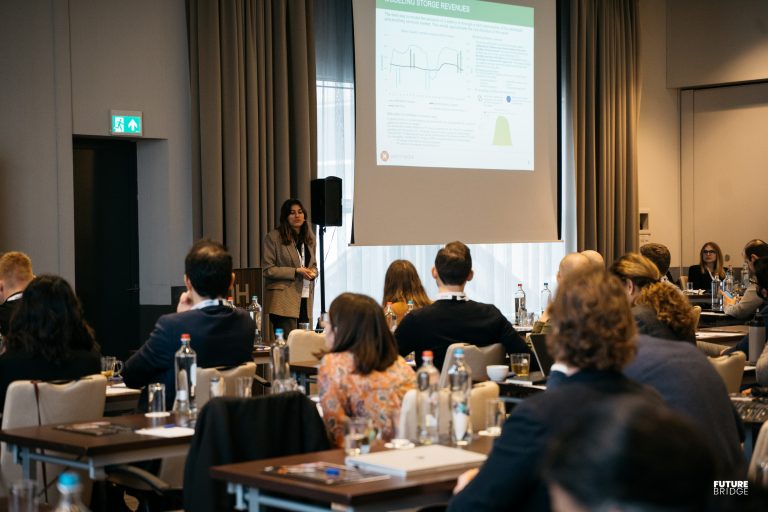
Recap and Insights From The 4th Power Price Forecasting Summit 2024
The landscape of power markets is undergoing rapid transformation driven by the accelerating energy transition. The rise of renewable energy, decentralization of resources, electrification of transport, and increasing involvement of prosumers is leading to greater uncertainty and volatility in electricity pricing. In this complex, evolving environment, the ability to accurately forecast power prices is becoming critical for stakeholders across the energy value chain. It is against this backdrop that the 4th Power Price Forecasting Summit 2024 by Future Bridge was held in Amsterdam from January 25-26. It brought together leading experts from around the world. This is to discuss the latest developments and innovations in this crucial field.

Navigating Uncertainty: Advances in Power Price Forecasting Methodologies
Electricity markets worldwide are transforming. It is driven by the accelerating adoption of renewable energy, decentralization of power generation, electrification across sectors, and other structural changes. This new era of complexity and uncertainty has led to heightened volatility and unpredictability in electricity prices. In response, leading practitioners are advancing forecasting techniques. It helps to enable market participants to better navigate risks and optimize operational and investment decisions. In the upcoming 4th edition of the 2024 Power Price Forecasting Summit, this 25-26 January in Amsterdam, experts across the industry will convene. They will discuss the latest innovations and best practices for building robust, accurate forecasting models suited to today’s challenges.

The Role of AI and Machine Learning in Power Price Forecasting
The energy industry is undergoing a profound transformation. It poses new complexities for power market participants. So, the accelerating transition to renewable energy sources has introduced significant variability and uncertainty into power systems. This volatility, combined with factors like evolving market design and economic shifts, has made accurate price forecasting more crucial than ever. Power companies are increasingly looking for advanced analytical techniques. It includes AI and machine learning in power price forecasting. These technologies can also uncover hidden insights, rapidly process vast amounts of data, and continually enhance performance over time. As AI and machine learning become more ubiquitous across industries, they are poised to transform power price forecasting. So, in this article let us look at their role in-depth.

Innovative Technologies for Reducing Marine Pollution: A Path Towards a Sustainable Future
Marine pollution is an alarming global issue that poses significant threats to our oceans and marine ecosystems. With over 80% of marine pollution originating from land-based sources, it is crucial that we harness the power of cutting-edge and innovative technologies to fight against this ongoing problem. In this blog post, we will explore some newest technologies that offer promising solutions for waste management, ballast water treatment, and air pollution control, potentially paving the way for a cleaner and healthier marine environment.

Navigating Towards a Greener Future: How to Begin Reducing Greenhouse Gas Emissions from Marine Vessels
As the global focus on environmental sustainability intensifies, the maritime industry finds itself at a crossroads. Responsible for a significant portion of the world’s greenhouse gas (GHG) emissions, marine vessels must adopt innovative measures to reduce their carbon footprint. By implementing energy-efficient technologies, exploring fuel alternatives, and optimizing operational practices, the industry can set sail toward a greener future. In this blog post, we will explore some of the best practices for reducing GHG emissions from marine vessels.

Why Sustainability is More Important Than You Might Think
As businesses look to grow and succeed in today’s economy, it’s easy to focus solely on profits and financial performance. However, an increasingly important factor for businesses to consider is sustainability. In this blog post, we will explore why sustainability is more important than you might think and why businesses should take it seriously.

Top Tips for Showcasing Your Business’s Product at a Conference
Conferences are an excellent opportunity for businesses to showcase their products and services, network with potential clients and partners, and build brand awareness. With hundreds or even thousands of attendees, it is essential to stand out and make a lasting impression. Here are some of the top tips for showcasing your business’s product at a conference.

“Green tariffs” and other emissions-related regulations coming to the EU this year
The EU’s new green tariffs, also known as border carbon adjustments, are intended to level the playing field for European companies by imposing tariffs on imported goods from countries that do not have equivalent carbon pricing or climate regulations. The tariffs would apply to a wide range of products, including steel, aluminum, cement, and chemicals. Companies that produce these goods in countries without equivalent climate regulations would likely face higher costs, which could be passed on to consumers in the form of higher prices.

8 Ways Conferences Can Help Your Business
Attending business conferences can help you expand your knowledge and skills. Conferences can be a great way to learn about various aspects of your line of work and can give you insight into new topics. If you’re thinking about attending an event but aren’t sure if it’s worth it, here are 8 reasons why attending business conferences is a great idea.
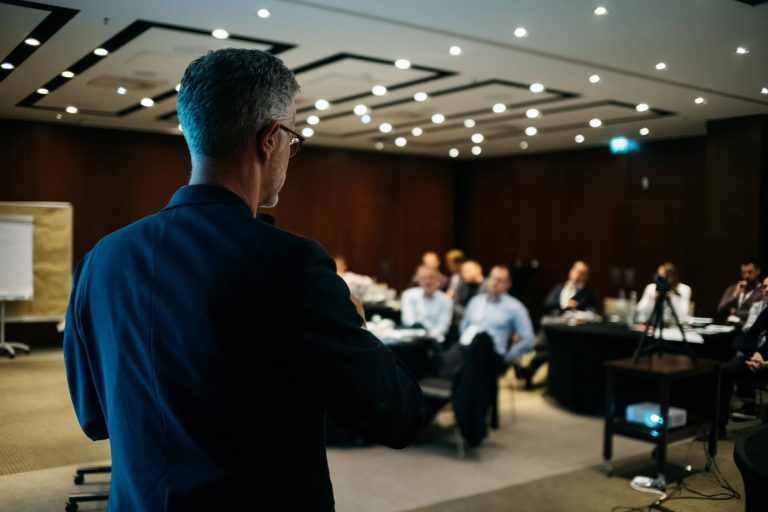
The European Summit on Energy Efficiency for the Life Sciences Industry
The 2022 Future Bridge hybrid conference was held in Berlin. Over the course of two days, attendees viewed presentations and case studies from industry experts, while enjoying numerous networking activities. The conference was dedicated to the vital need for efficiency in the energy-intensive pharmaceutical industry. Life sciences are 55% more emission-intensive than the automotive industry, and as the world decarbonizes, it is crucial to limit energy expenditure. Pharmaceutical companies need to certify that their facilities are energy efficient to comply with future regulations while still providing the world with life-saving medication.

The Future of African oil and gas
With 1.2 billion inhabitants and 30 million square kilometers, Africa is often forgotten during the debates about renewable energy. The continent is actually rich in oil, gas, and other valuable fossil fuels. It is also one of the most mineral-rich areas in the world. But inefficiency and poor management have led to an underdeveloped energy industry. Indeed, Africans struggle with electricity supplies in general. So what are the opportunities and possibilities of oil and gas in Africa?

Impact of the COVID-19 Pandemic Crisis on the Efficiency of European Intraday Electricity Markets
Many European governments reacted to the COVID-19 pandemic by instituting lockdowns. Regional specifics varied, but residents and citizens were generally ordered to stay and work from home, when possible. Worldwide, nearly 4.2 billion were under some form of lockdown. Simulatainusly, the pandemic came with a degree of uncertainty that translated into an economic slowdown. As consumers spent less, companies’ energy demands fell. So what can businesses learn from COVID-19’s impact on electricity markets and what should they do in the future?

Six Tips for Reducing Energy Consumption in the Food industry
The food industry needs to understand how to limit its energy consumption and by extension its CO2 emissions. Food production may use up to 30% of global energy and is increasingly under pressure from GHG emission regulations. Companies should make a holistic assessment of where new technology can be implemented. Industry peers are a valuable source of information, as learning from the experiences and mistakes of others is cheaper. Pitfalls to be avoided, case studies, and best practices should all be analyzed to make an informed energy management plan.

Energy Consumption and Price Forecasting with AI
Rising energy prices and regulatory pressure to limit GHG emissions both push companies to find every possible solution to save power. There has been significant investment in energy, with nearly $1.9 trillion spent in 2018 alone. But improvements have been unfocused, combining elements of sustainability with general power-management principles. Similarly, technological innovations in AI and machine learning are only recently being applied to energy management. So how can a company employ artificial intelligence to direct its energy strategy?

The State of New Jersey vs the energy industry
The state of New Jersey is suing several fossil-fuel companies such as Exxon, Chevron, and BP, for their impact on climate change. More precisely, New Jersey argues that these companies have made deceptive statements about their climate impact. This is commonly referred to as greenwashing, an activity that is coming under more and more scrutiny. Greenwashing has become a hot-button issue in the legislature of many western countries. Future Bridge has created a more thorough overview of greenwashing around the world can be found here. So how does NJ plan to prove its case in court? And why should the industry at-large pay attention?

How fast charging batteries will revolutionize mining
As the mining industry transitions to a more environmentally friendly, automated, and remote-controlled approach, power is a challenge. Current batteries do not have the capacity for the heavy-duty work needed to extract ore and other materials from the earth. The heat, humidity, and generally harsh conditions of a mine are not conducive to battery longevity. This is all set to change, as a collective effort of nice companies, including Shell, spearhead the effort to develop a fast-charging, high-capacity battery.

How Big is the Problem of greenwashing?
If a company exaggerates its environmental impact or claims an environmentally-friendly policy that is not true, it is engaging in greenwashing. So how widespread is this issue? to answer this question, two data points will be considered. First, how do various countries see and persecute greenwashing? It stands to reason that a country that actively combats greenwashing has cases of greenwashing in it. Secondly, what do various research groups say about the amounts of greenwashing from region to region?

What is the Greenhouse Gas Protocol?
The GHG protocol was developed in the late 1990s as a means to create a framework for measuring and managing greenhouse gas (GHG) emissions. Despite its daunting name, the new set of standards mostly influences the terms and definitions used to communicate environmental data. In short, this means standardizations of information. Companies should see the GHG protocol not as a new set of regulations, but as an opportunity to protect themselves from allegations of greenwashing.

Digital disruption: 5 ways the mining industry will benefit from modernization
Most people imagine monstrously large trucks and drills when they hear the words “mining and metals industry.” This view is partially accurate, as mining uses some of the most cutting-edge, specialized machinery in the world. The industry now also needs to consider the importance of sophisticated software to go with its impressive hardware. Digitalization is the key to enhancing every operation, from increased yields to reduced fuel costs. The time to refocus is now so make sure to explore the five ways that digitalization can benefit an operation.

The Future of Greenwashing in the United States
In the United States, companies are facing more and more lawsuits from consumers and even local governments over allegations of greenwashing. Many of these lawsuits allege that the environmental claims of a company do not match reality. When a company violates greenwashing laws, it risks fines and other legal measures. There is also a reputational risk from misleading the public. So what are some recent examples of this phenomenon and what can a company learn from them?
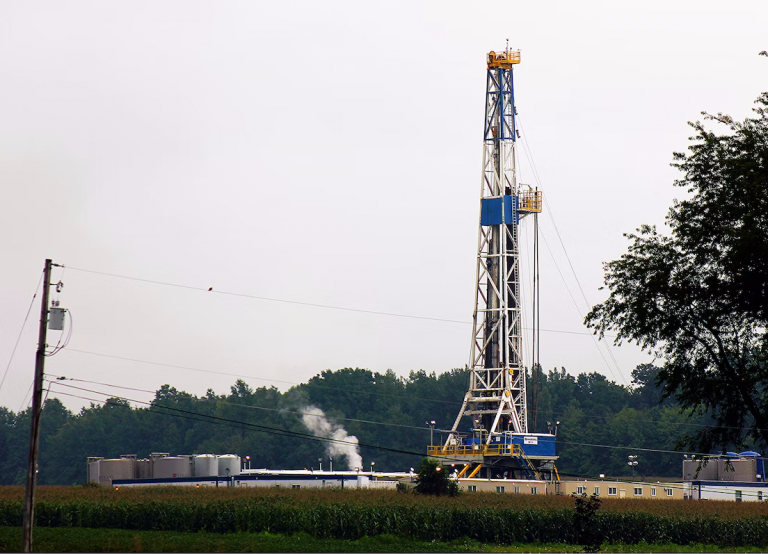
How the mining industry is revolutionizing green fracking
Fracking, more properly known as hydraulic fracking, is a time-tested method for mining natural gas, shale, and oil. Since the 1950s, we have started to better understand the environmental impact of “traditional” fracking. Heavy use of freshwater, water contamination and even earthquakes have been linked to fracking. The negative effects of this sort of fracking have almost made it a dirty word, one which the average person associates with environmental disruption and pollution. So is this conception of fracking still valid?

5 ways the mining industry innovates with renewable energy
The mining industry has a reputation for environmental disruption. Diesel-powered vehicles and words like “fracking” create the image of an industry unable to cut emissions. But is this perspective warranted? Contrary to popular belief, many mining companies are taking active steps in cutting their CO2 output and embracing sustainable, modern solutions. So let’s take a look at some of the ways the industry utilizes the latest developments in renewable energy.

Low-carbon Mining for a Greener Future
Emissions reports have shown that in some mines, the hauling equipment alone creates a quarter of total mine emissions. This is a critical area that needs to be overhauled as the industry cuts its emissions and achieves a greener future. So what can be done in the short term and long term? There are two main options mining companies can implement. Firstly, an operation can transition away from diesel to a more sustainable alternative. Secondly, the entire fleet can be overhauled for electric vehicles, sometimes referred to as Battery electric vehicles (BEV).

The Legal Risks of Greenwashing and how to Avoid them
Often overlooked when compared to the automotive industry, pharmaceutical companies are still responsible for 55% more carbon emissions than car manufacturers. Since pharmaceutical companies make life-saving medication and equipment, this issue is often not properly addressed. However, the current trends in environmental legislation mean that medical research and manufacturing companies must carefully consider how they present their environmental disclosures and policy.
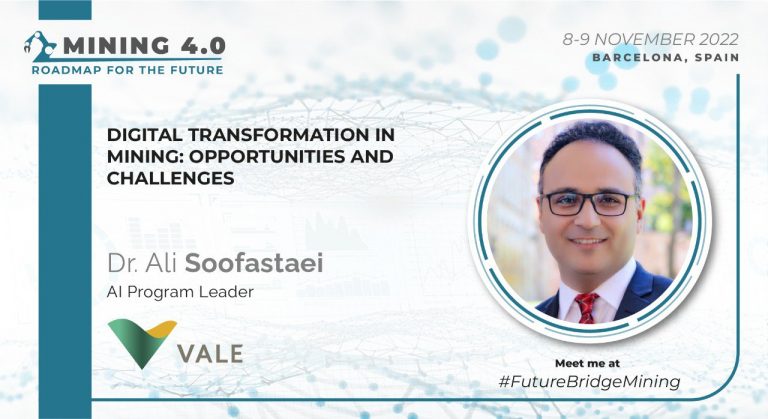
Mining 4.0: Meet Dr. Ali Soofastaei, Our Keynote Speaker!
Future Bridge is thrilled to announce Dr. Ali Soofastaei as the speaker of the 2nd conference in the Mining & Metals series. Dr. Soofastaei, AI Program Leader at Vale, will give an online keynote presentation on November 8th at the Mining 4.0: The Roadmap of the Future summit, in which he will discuss the challenges and opportunities of the digital transformation in the mining industry. Dr. Ali Soofastaei is a global artificial intelligence (AI) industrial projects leader, an educational programs instructor, international keynote speaker, academic editor, and professional scientific author.
10 Ways to Maximize Your Conference Sponsorship Benefits
Corporate and marketing events provide a perfect environment for those looking to engage and connect. As a sponsor, you can network, learn about current industry trends, and hear from key experts. But it’s important to remember that a conference is also a busy time, with packed schedules and a long list of new names, possibilities, and information.
The experienced conference attendee knows that simply showing up is not enough, rather, there are steps one can take beforehand to maximize the opportunities offered by any event. Before and during a conference, it is a good idea to remember ways to maximize your conference sponsorship benefits.
Conference Speaker Checklist: 8 Tips for Presenting at the Business Event
In this day and age, it can be difficult to get your company’s message across to a target audience. At an industry-tailored conference, you stand a greater chance of reaching the end users if you are part of the agenda — but there’s more to it than grabbing the speaker slot. You can put your business on the map with a well-executed speech at a conference. But for many people, including experienced speakers, presenting at a business event is like walking a tightrope. But fear not! To ensure your speech goes smoothly, we’ve put together 8 expert tips that will help you get the most out of your speaker slot.
Future Bridge Materials Management Series Presents ‘4th Product Chemicals Compliance & Sustainability Summit,’ in Collaboration with REGARTIS
The Materials Management Series, which features a variety of exceptional presenters each year, is a cornerstone of Future Bridge events. This fall, the series is back with the much anticipated ‘4th Product Chemicals Compliance & Sustainability Summit.’ The two-stream event will take place in Prague, Czech Republic on the 29-30th of September. We are pleased to announce that this year’s event is being organized in collaboration with the company REGARTIS. We are here to clear a path through the thicket of environmental regulations and make compliance a lot easier!
Understanding Conference Sponsorship: Why Should You Become a Sponsor?
Becoming a conference sponsor is undoubtedly one of the most effective ways to gain visibility. That makes sense: major companies attend conferences and exhibitions because they want to embrace innovation, improve their business operations, network with other industry professionals, or otherwise benefit from the experience. But what if you have doubts? We would like to share with you the advantages of becoming a conference sponsor, as well as provide you with more information regarding different sponsorship packages and what they entail. Our previous sponsors can attest to the numerous benefits of sponsoring a Future Bridge event.
Tips for Getting the Most from a Business Conference
Conferences can be a busy time, with many opportunities for exchanging ideas, information sharing, and networking. If you are not clear about your objectives, attending a business event can seem overwhelming. To help you get the most from your next conference, we’ve provided a handy checklist to ensure your upcoming business event goes off without a hitch, outlining what to do before, during, and after the big day. Network with confidence, anytime, anywhere. We are here to help you leave a lasting impression, build authentic business relationships, and enhance your brand visibility. Keep these ideas in mind at your next business event!

Beware of Greenwashing: How to Find a Line Between Oversharing And Being Authentic
Last year, the European Commission conducted a thorough investigation of EU companies. To determine whether businesses’ claims about their sustainability practices were misleading, the National Consumer Protection Agency screened for greenwashing. The EU report indicates that “in 42% of cases, the environmental claims were exaggerated, false or deceptive and could potentially qualify as unfair commercial practices under EU rules”. The number of companies that have been accused of greenwashing is staggering. Yet, even experienced marketers can unintentionally mislead the public.

The Great Debate: Why is Europe so Divided on Nuclear Energy?
As the prices of fossil fuels rise and Europe moves forward in its efforts to reduce carbon emissions, nuclear power is at the center of the renewable energy debate. Since Brussels has pledged to fund sustainability efforts, the question of whether nuclear energy is green or not remains relevant. Certainly, incorporating nuclear energy into the EU taxonomy for sustainable activities would allow private business owners, political leaders, and energy companies to meet increasingly high environmental standards. However, not all countries are convinced that nuclear power is a sufficient carbon-free alternative to the ongoing energy crisis.

Everything You Need to Know about REACH: How the New Regulations Will Affect the Chemical Industry
The EU REACH is the most important regulatory framework governing chemicals in Europe. REACH, which stands for Registration, Evaluation, Authorization, and Restriction of Chemicals, is an effort by the European Union to enhance its environmental and human health protection. Companies must keep up with the latest chemical production guidelines in order to avoid legal risks, operate in compliance with regional laws, and remain competitive.

5 Long-Term Trends in the European Power Market
There is no doubt that the European power market has been through a period of transition over the past decade. Changes in environmental policies, new technologies, and rapidly rising fossil fuel prices have altered the energy scene around the globe. As the industry sees shifts in patterns, companies need to keep their eyes peeled for certain long-term trends to avoid volatility. The time to refocus is now, so make sure you don’t neglect your long-term planning by looking at these 5 long-term trends in the European power market.
Energy Transition & Emission Reduction Forum 2022: Facing the Challenges of Decarbonization with Leading Mining & Metals Industry Experts
“Energy Transition & Emission Reduction Forum 2022” was held in Stockholm on the 9th-10th of June with both days consisting of relevant content presented by experts in the field. The event allowed delegates to engage with industry leaders while learning more about the future of sustainability in the metals and mining sector.
The Power Price Forecasting Summit: The Future of Price Development in the Energy Sector
The 2022 Future Bridge conference ‘The Power Price Forecasting Summit” was held this summer in Barcelona, Spain. The two-day event took place between the 9th-10th of June, with both days containing relevant presentations, Q&A sessions, and networking activities with the energy industry giants.

Disruption in Electrohydraulics: New Technologies Lead the Way
Hydraulic systems are one of the most efficient ways to transport mechanical energy. Engineers may now create systems that are more efficient, effective, and cost-effective thanks to new technology and breakthroughs. Hydraulic system manufacturers are investigating ways to improve the intelligence of their products using electrohydraulics, which combines electric motors and controls with hydraulics.

Climate Change Threatens Food Security
The IPCC report portrays an alarming scenario for the future of our food systems. Food insecurity will be unevenly distributed, hitting the poorest areas of the world more severely. By 2050, large land areas might be degraded, and pollination will be hindered if the temperature continues rising. Regenerative Agriculture can be a useful ally in the transition of our food system. The support of this holistic cultural approach to agriculture would contribute to restoring climate stability, increasing biodiversity, rebuilding soil fertility, and producing healthy food. RegAgri4Europe is a two-year project financed by the Erasmus+ Programme.

The New European Commission Regulation on Agricultural & Forestry Vehicles
The new Regulation on Stage V is the most comprehensive revision of the non-road mobile machinery regulations since Stage IIIB. The main objectives of the Regulation are to ensure that NRMM engines placed on the market in the EU are type-approved in accordance with the new emission limits introduced by the Regulation. This will ensure a high level of environmental protection while avoiding market fragmentation and ensuring a level playing field for all manufacturers on global markets.
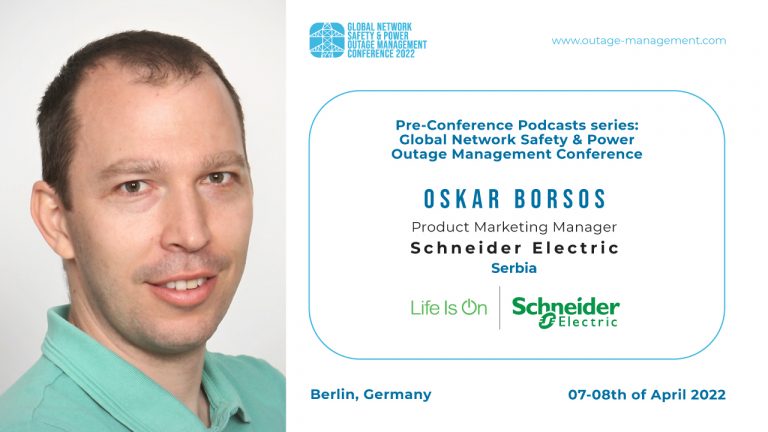
Pre-conference podcast with Oskar Borsos, Product Marketing Manager, Schneider Electric, Serbia
In this Global Power Outage & Safety Process Management pre-conference podcast our speaker Oskar Borsos would be highlighting a few points from his upcoming presentation about improving quality of life with proactive communication.
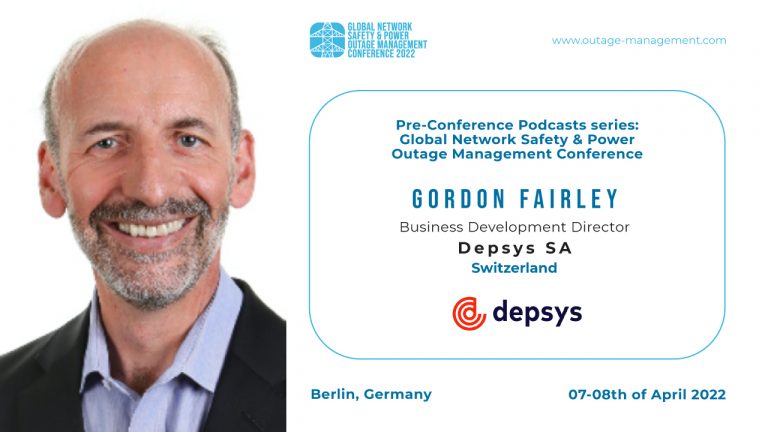
Pre-conference podcast with Mr. Gordon Fairley, the Sales and Business Development Leader at Depsys
In the podcast, Mr. Fairley emphasizes the need for more resilient grid networks in the context of electrification and the increasing digitalization of contemporary societies. The already high demand for power supply is estimated to double by the year 2050, putting a lot of pressure on the grid networks. It is, therefore, critical for DSOs to develop functional and outage management systems, as avoiding fault is something that the DSOs can benefit from significantly, both in terms of cost-efficiency and customer satisfaction.
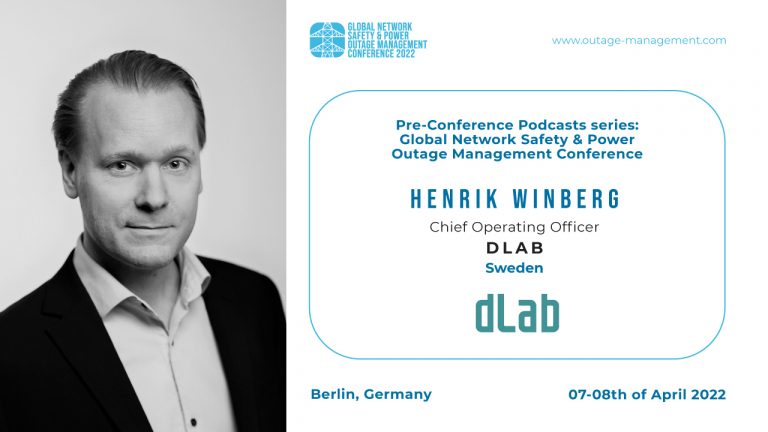
“We give DSOs the power to act!” – Henrik Weinberg, the Chief Operating Officer of dLab
Future Bridge held a pre-event podcast with the COO of dLab – Henrik Weinberg. MC’s, in anticipation of the conference. We wanted to get ann insight into the presentation “A Single Source of Truth for Substation Analytics Gives DSOs Power to Act” which Mr. Winberg will give at the Global Power Outage & Safety Process Management Conference in April.
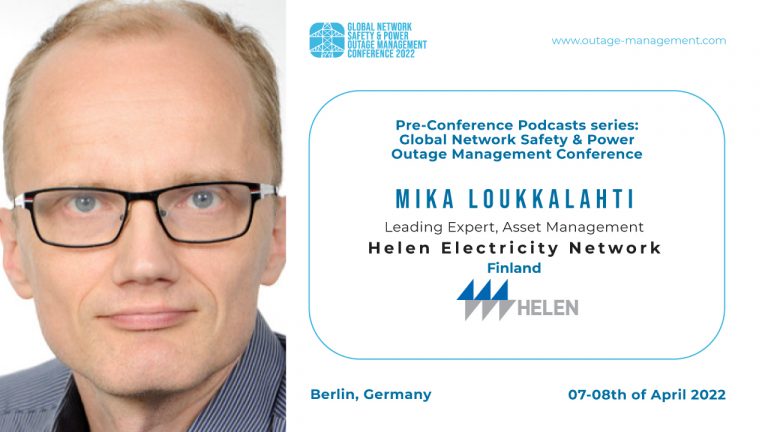
Pre-conference podcast with Mika Loukkalahti, Leading Expert at Helen Electricity Network.
One of the speakers from the Global Power Outage & Safety Process Management Conference joined this episode of the pre-conference podcast to reveal and discuss the critical points of his presentation about automation as a tool towards an excellent reliability level.

The Top 10 Reasons To Attend Conferences
Attending business conferences is an excellent way to develop your professional skills. Conferences help you get insights into various aspects of your line of work and can be a great way to gain new knowledge and skills. If you are thinking about attending an event but are not sure if this is something you should worry about, here is a list of the top 10 reasons why attending business conferences is a great idea.

Germany to end all COVID-19 restrictions by the end of March 2022
Chancellor Olaf Scholz and Germany’s state and federal leaders have decided to gradually lift the COVID restrictions by the end of March, which they announced at the press conference on the 16th of February. Therefore, as anticipated, the ‘Global Power Outage & Safety Process Management’ Conference will occur physically as well as virtually on the 7th-8th of April 2022.
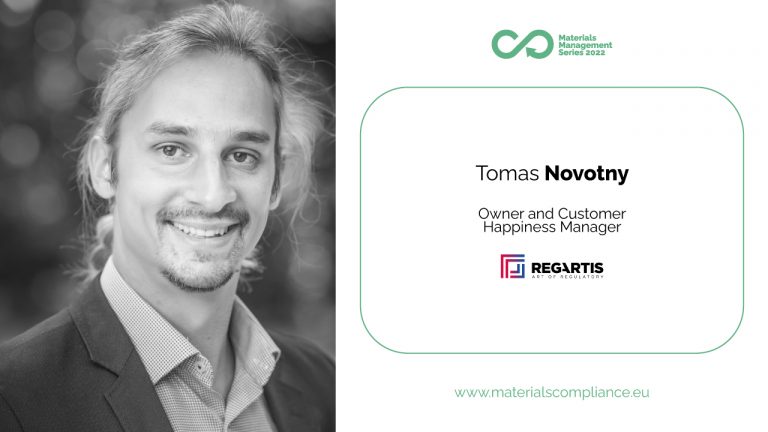
Pre-conference podcast with the Founder of Regartis, Tomas Novotny
Watch the short podcast with Tomas Novotny, Founder of Regartis, to see his take on the impact of the EU’s environmental protection strategy on the chemical industry, industry predictions and trends. The podcast will also explore key messages of Regartis’ presentation at the upcoming “Product Substance Management & Regulatory Compliance Conference”.

How to make a memorable conference presentation
Presentations are a visual and effective way of presenting information. It is an integral part of all online meetings and business conferences. In this article, we will not teach you how to present, however, we will share with you tips to capture the audience’s attention, from the event organiser’s point of view.

2021/2022: the comeback of hybrid/physical conferences
Going offline? In this article we are going to discuss our development plans and look into the future. Despite the popularity and benefits of virtual events, we want to return to other formats of events like Hybrid and Physical. We believe that these are the best ways to experience more memorable events. In the coming months, we will focus on perfecting this experience.

Food Safety: An Important Aspect of Food Security
To protect the consumer, it is important that the food on our table is produced, processed, and distributed in a safe manner. Food trade liberalisation and globalisation have not only opened our borders, but they have also increased our susceptibility to pest and food safety threats. The number of people affected by food poisoning in industrialised countries is increasing by 30% annually.
